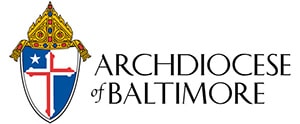ROME – Calling the Blessed Virgin Mary the “first tabernacle that gave a home to Jesus,” Archbishop Edwin F. O’Brien celebrated a June 27 Mass for more than 100 pilgrims inside the ornately decorated Borghese Chapel of the Basilica of Santa Maria Maggiore in Rome.
Although Mary was puzzled and even distressed when the Angel Gabriel asked her to become the Mother of God, Archbishop O’Brien pointed out in his homily that Mary said yes to God and repeated her “yes” throughout her life. She is a model for Christians today, he said.
“Mary was the New Eve,” said Archbishop O’Brien, standing beneath a soaring cupola that depicts the Assumption of Mary into Heaven. In the colorful image, painted by Ludovico Cardi, the moon beneath Mary’s feet was famously modeled after Galileo’s description of it after he looked through his telescope.
Reflecting on the day’s Gospel reading, which recounted Mary’s visit to Elizabeth, Archbishop O’Brien recalled that Pope Benedict XVI once referred to Mary’s journey to Elizabeth the “first Corpus Christi procession.”
“We pray that she will guide us,” he said.
Many of the pilgrims were awed by the majesty of the historic basilica, the largest church in Rome dedicated to Mary. Pope Liberius commissioned the basilica in 360. According to tradition, the pope wanted the shine built at the site where Mary appeared in dreams by a patrician, his wife and the pope.
The basilica also houses the relics of what is believed to be wood from the crib Mary used in Bethlehem for the Infant Jesus. Its ceiling is the only gold-leafed ceiling in Rome, adorned with gold obtained from the New World in 1492.
Hoai-an Truong, who attends Mass at St. John in Columbia and the Basilica of the National Shrine of the Assumption of the Blessed Virgin Mary in Baltimore, was inspired to touch the hands of Jesus and Mary that are depicted on the Holy Door of the Basilica. The simply adorned door is opened every 25 years.
“I felt really humbled to be right there and touch the same door Pope John Paul II touched to open during the Jubilee Year,” said Mr. Truong, who was equally impressed to see the late pope’s coat of arms displayed on the door.
“It’s such a magnificent place,” he said.
Following Mass, pilgrims toured a variety of other historic sites including St. Peter in Chains and the Coliseum.

